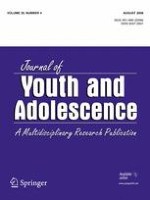01-08-2006
Impulsivity in Juvenile Delinquency: Differences Among Early-Onset, Late-Onset, and Non-Offenders
Gepubliceerd in: Journal of Youth and Adolescence | Uitgave 4/2006
Log in om toegang te krijgenAbstract
The present research investigated differences in levels of impulsivity among early-onset, late-onset, and non-offending adolescents. 129 adolescents (114 males, 15 females), of whom 86 were institutionalised (M age=15.52 years) and 43 were regular school students (M age=15.40 years) participated. Each participant completed the Adapted Self-Report Delinquency Scale, Stroop Colour and Word Test, Time Perception task, Accuracy Game, Risk-Taking Game, and the Eysenck Impulsiveness Questionnaire. Results suggest that adolescents who display rapid cognitive tempo, poor mental inhibitory control, and high impulsivity are more likely to be early-onset offenders. Offender and non-offender groups showed significant differences on several measures of impulsivity, which may suggest that late-onset offenders acquire or exacerbate impulse-related problems through social mimicry of early-onset offender peers. Potentially important implications for our understanding of delinquency and the design and provision of prevention programs are highlighted.
